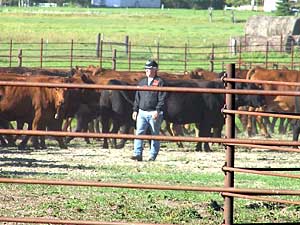LSU Appeals For Donations For Cattle -
Stranded After Hurricane Rita
Jason Rowntree, coordinator of the adult beef extension at Louisiana State University, is asking for donations of hay, feed pellets, fencing supplies, range cubes, fresh water and particularly help with transportation to rescue up to 175,000 cattle stranded by Hurricane Rita.
Although there have been areas that were devastated by the storm, there has been relatively little loss of life, said Tommy Shields, an extension specialist who is at the scene assessing damage and rounding up cattle. "We've just lost a lot of stuff," Shields said.
The extension has established staging areas for donated supplies:
-Calcasieu Parish
Miller Livestock Barn
Highway 27 South
De Quincy, La. 70633
337/515-6988 (daytime)
-Cameron Parish
Sweetlake Land and Cattle
Contact Fred Bourgeois 318/288-4083 or Gary Wicke 337/274-1842
Iberia Research Station
603 LSU Bridge Rd., P.O. Box 466
Jeanerette, La. 70544
Contact Wayne Wyatt or Sonny Viator 337/276-5527
-Lafourche/Terrebone Parish
Raceland Agriculture Fair Bldg.
Raceland, La.
985/537-3390 (daytime) or Mike Hebert 985/413-1158
-Vermillion Parish
Vermillion Parish Office
1105 West Port St.
Abbeville, La. 70510
Contact Andrew Granger 337/296-6852
Cash donations can be sent to the National Cattlemen's Foundation, which is also coordinating donated feed, supplies and trucking services, by calling 806/358-3681 or 800/BEEFUSA.
Source: by Pete Hisey on 9/30/2005 for Meatingplace.com











